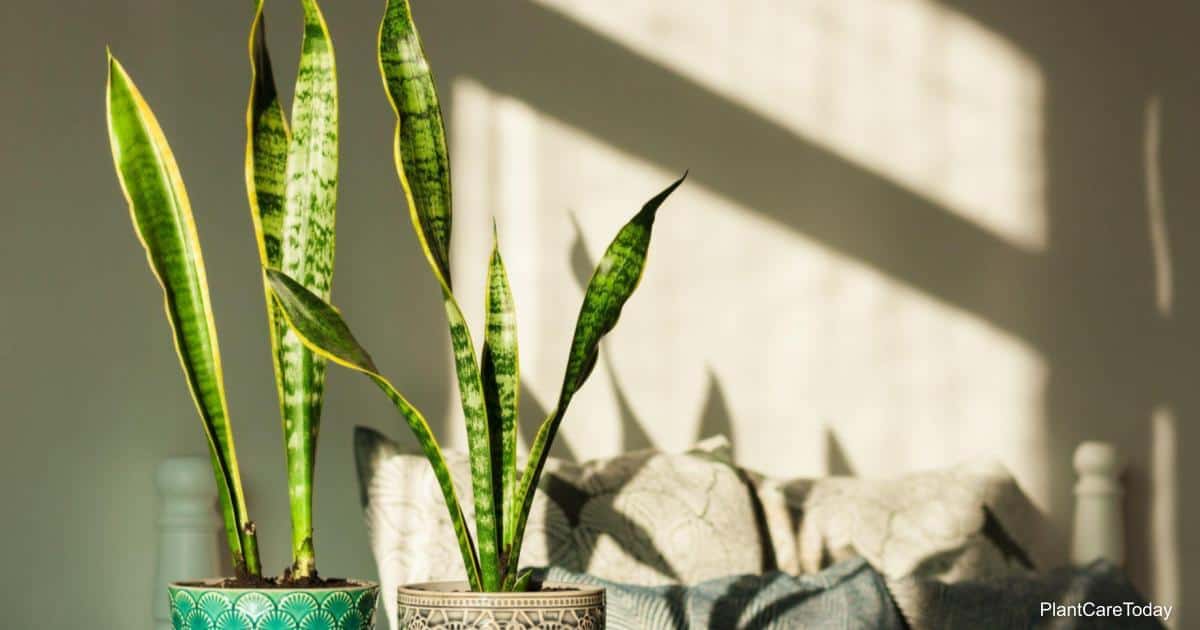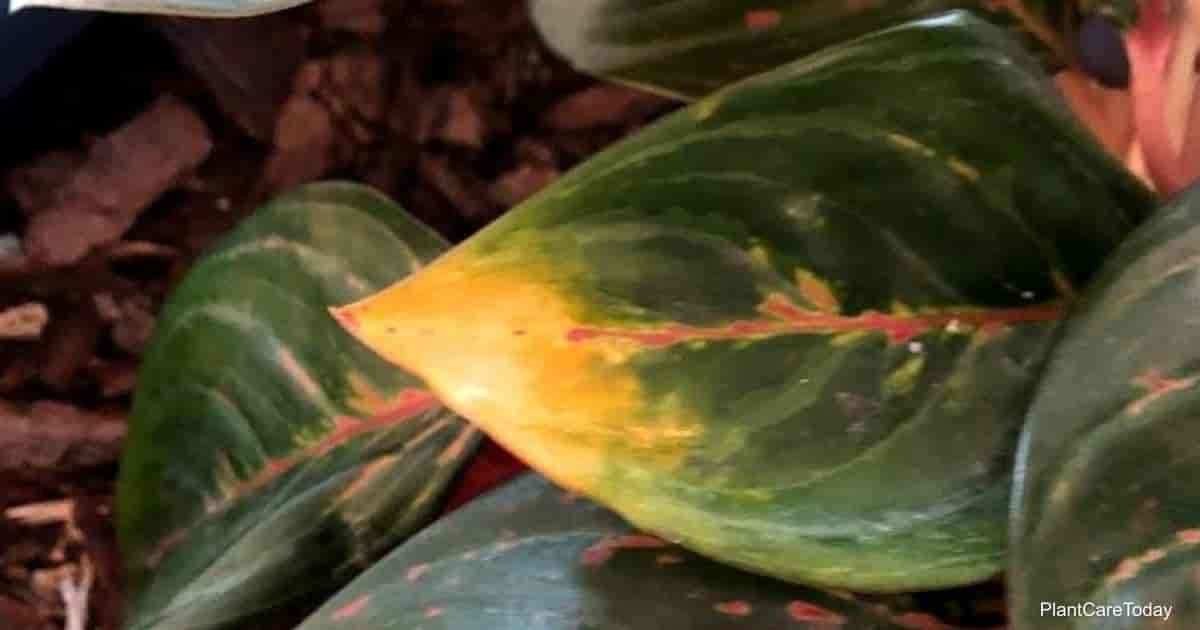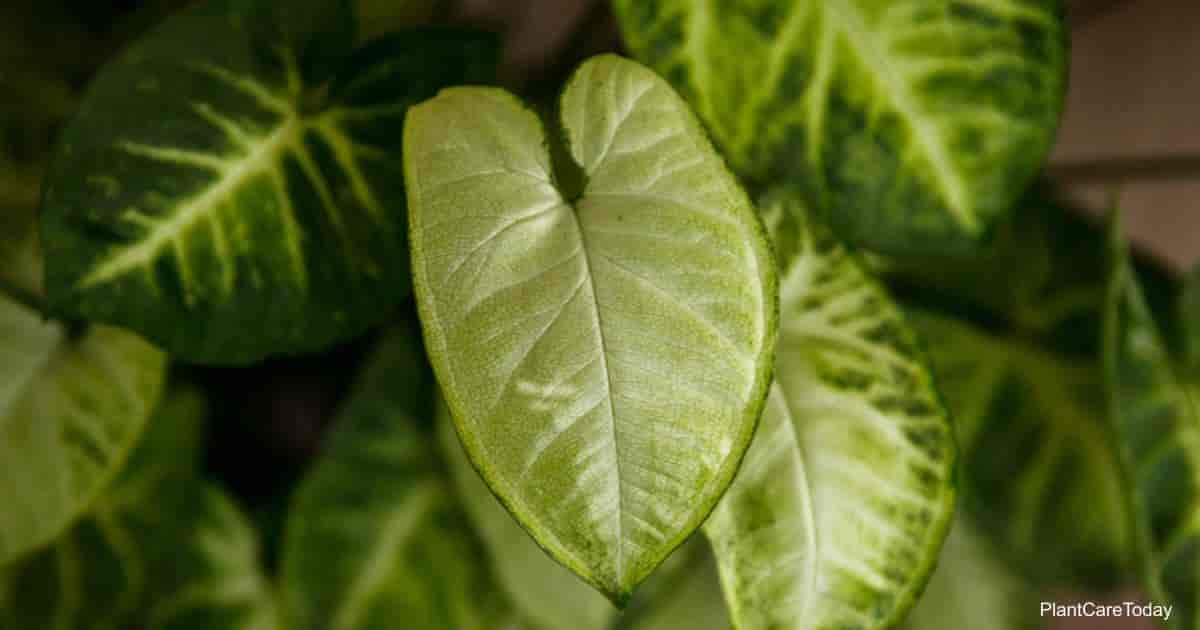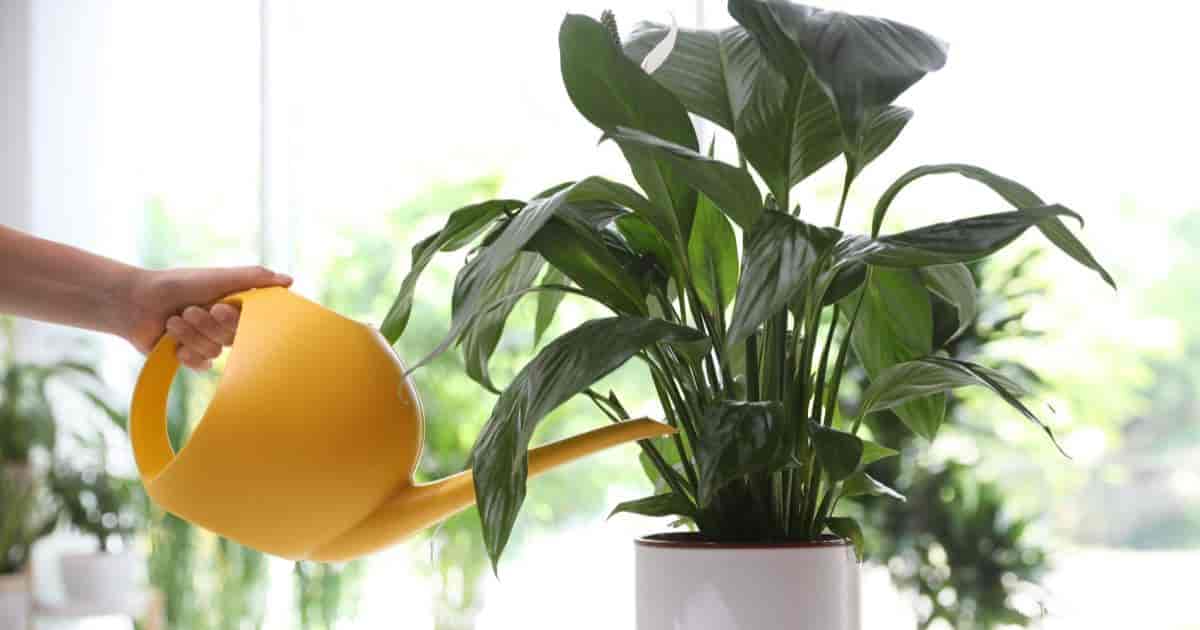A thirsty snake plant shows wrinkly, curling, browning leaves, and its soil may be so dry they seem baked.
If your snake plant is dehydrated, give it a thorough, deep watering and allow all excess water to run off. Your plant should revive shortly.
Snake plants (Sansevieria) are succulent perennial members of the Asparagaceae family.
Their native environment, tropical East Africa, thrives in great heat and low water settings. For this reason, they are well known as easy-care house plants.
They need some water and will suffer if not watered enough.
If your snake plant is thirsty, it will exhibit the same symptoms as other thirsty plants. The leaves will begin to shrivel and wrinkle. If neglect continues, the leaves will dry out and turn brown.
Eventually, the dead leaves will crumble and fall over. However, even when this happens, the roots of the rugged snake plant may persist beneath the baked soil.
What Can You Do For A Dehydrated Sansevieria?
When your snake plant shows signs of thirst (or even if it appears dead), you’ll need to give the soil a good soaking.
Here’s what you need to do:
- Place the pot into a container of lukewarm water and allow it to sit for at least 15 or 20 minutes.
- Check to ensure that the soil is completely soaked.
- Place the plant in a position that allows excess water to run off.
If your sansevieria is only beginning to show signs of thirst, it should perk up and look better within the hour.
If it seems to be dead, be patient. It may show signs of new growth within a couple of weeks.
TIP: If your plant has wrinkled leaves, they will plump once it’s watered. If the leaves are damaged and brown or appear dead, remove them with a sharp, sterile tool. Those leaves will not recover.
Make Your Snake Plant’s Home Hospitable
Besides water, you should also examine the plants’ environment. For example, even though these plants can do well in direct sunlight, bright indirect sunlight is always better.
Avoid housing your plant in a south-facing window that receives bright sun, magnified through glass, all day.
Instead, move your plant away from the window to prevent overheating and burning.
Do not place sansevieria (and any plant) in an area where harsh hot or cold winds blow on it consistently (i.e., in front of a heater or air conditioner).
Instead, air circulation around your plants should be gentle and indirect.
Make sure your plant isn’t overcrowded. Snake plants produce offsets with great enthusiasm. It doesn’t take long for a single plant to fill a pot and use up all the soil.
When this happens, there is no way for the plants’ substrate to retain water. Thus the plant will only be able to uptake water when you water it, so you’ll have to water it much more often.
When your snake plant gets crowded in its container, it’s time to tip it out, divide it, and repot it with a fresh potting medium.
How Can You Keep Snake Plants From Drying Out?
Continue to provide your plant with the right amount of water by using the soak-and-dry method of watering. Then, when the soil is almost entirely dry, give your plant a good soaking.
The plant will take up the water it needs and store it in its succulent leaves. This will let the leaves stay nice, even when the soil is nearly dry.
Take care not to overwater snake plants with frequent, small drinks because this will lead to root rot. Instead, your goal is to give the plant a deep drink before it needs it.
The leaves should always be upright and display the desired shades and coloration for the type of sansevieria you have. Avoid having leaves that are:
- Slow-growing:Healthy sansevieria should grow tall and strong fairly quickly. The plant should also produce many offsets to get the right water, nourishment, light, and warmth.
- Brown:Depending upon the type of sansevieria you have, healthy leaves may be grayish-green, deep green, bright green, and marked with streaks of bright yellow, orange, or cream colors. But they should never be brown. Brown tips or segments mean thirst.
- Wrinkled:If the plants’ leaves are wrinkled, lack of water has started to damage the plant.
- Droopy:Healthy sansevieria leaves should always be upright.
- Crunchy: Sansevieria leaves should always be slightly flexible, never dry, and crunchy.
- Fallen:When healthy, the leaves of this plant will stand for years. It is unusual for sansevieria leaves to die of natural causes.
- Curled:Again, sansevieria should always have tall, upright leaves, never curly.
In addition to establishing a regular soak and dry watering schedule, you should give your healthy snake plant a monthly feeding of half-strength, water-soluble fertilizer during the growing season (spring and summer). Don’t fertilize in the autumn and winter.
Mist your snake plant daily between waterings to keep humidity high around the plant and help prevent dehydration.
What If You Overwater Sansevieria?
Overwatering snake plants is worse than underwatering. Rugged snake plants can go without water for a month or so and will rejuvenate when adequately watered.
It causes fungal growth that can be very difficult to eliminate and can easily kill your snake plant and spread to other plants.
Overwatering can also cause similar symptoms to underwatering, including:
- Brown leaf tips
- Wilting
- Stunted growth
- Yellowed leaves
Don’t immediately assume your plant needs water when you notice these problems. Check the soil. If it still feels moist, your situation will likely be overwatering.
When this is the case, refrain from watering until the soil dries out. Or you may be better off repotting the plant into fresh, dry, well-draining potting soil.
When you do, do the following:
- Check the roots and cut away any soft and mushy portions.
- Cut out damaged leaves, as well.
- Always use a very sharp, sterile cutting implement to perform this surgery.
- Wash the roots thoroughly.
- Allow the plant to rest in open air overnight before repotting into fresh, dry potting soil.
Note that this does not mean the soil should be dust-dry. Most potting soil new out of the bag is already slightly moist.
Be sure the new container has ample drainage. Natural terra cotta is the best material for a sansevieria container.
Wait a week or so before providing a thorough drink, and then wait until the soil has nearly dried before watering again.
You may wish to include a dose of anti-fungal treatment in the first watering.
Minimal, Consistent Care Keeps A Snake Plant Healthy And Happy
Sansevieria is a somewhat fail-proof plant.
Here’s what you need to remember:
- First, pot it in well-draining soil in a natural pot with plenty of drainages.
- Then keep it in an area that provides consistent warmth and bright, indirect sunlight.
- Water thoroughly when the soil is nearly dry and lightly mist daily.
Your snake plant will stay healthy and happy if you follow these tips.
Credit : Gary Antosh (https://plantcaretoday.com/underwatered-snake-plant.html)





